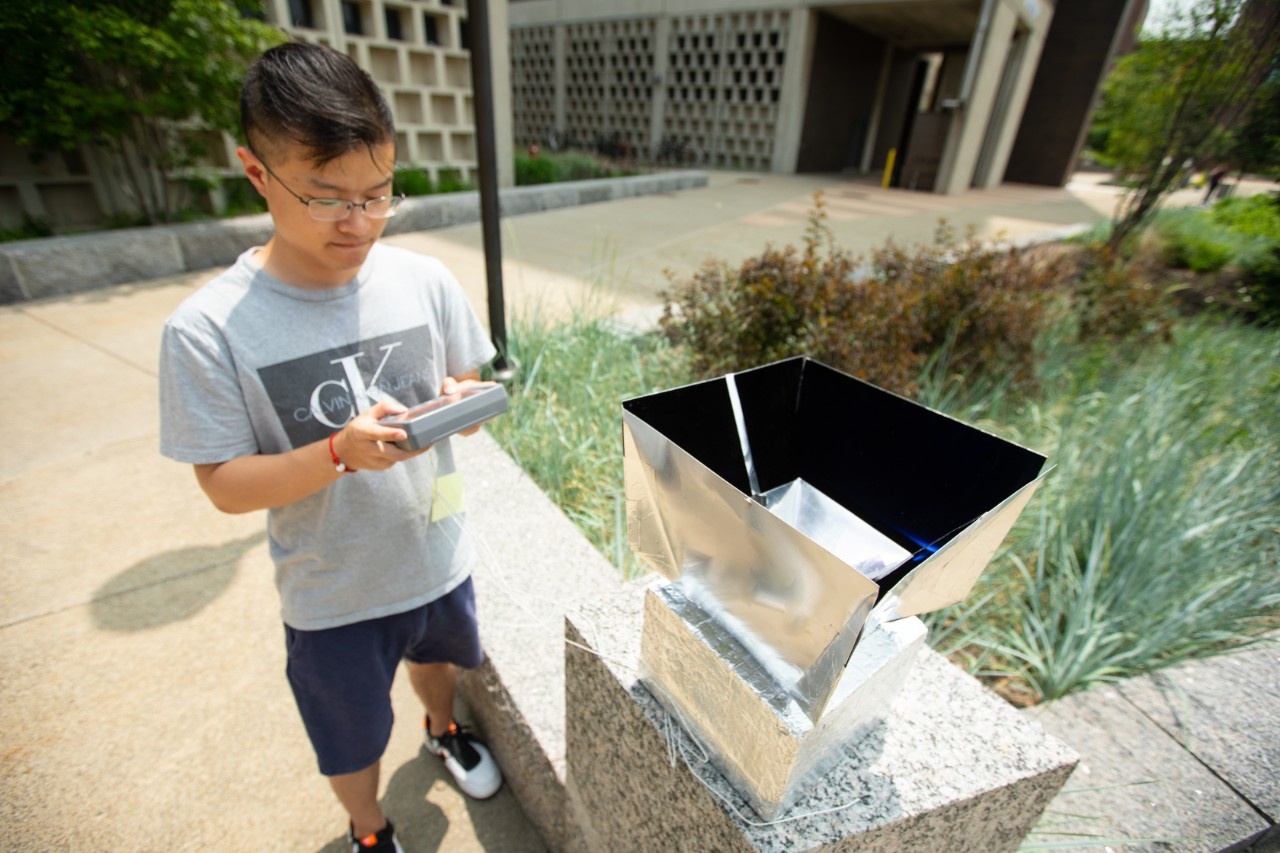Engineers have designed a new system that can help cool buildings in crowded metropolitan areas without consuming electricity, an important innovation at a time when cities are working to adapt to climate change.
The research will be published on Aug. 5 in Nature Sustainability. The study was an international collaboration between lead researcher and associate professor of electrical engineering Qiaoqiang Gan’s group at Buffalo University, Boon Ooi’s group at King Abdullah University of Science and Technology (KAUST) in Saudi Arabia, and Zongfu Yu’s group at the University of Wisconsin-Madison.
The system consists of a special material — an inexpensive polymer/aluminum film — that’s installed inside a box at the bottom of a specially designed solar “shelter.” The film helps to keep its surroundings cool by absorbing heat from the air inside the box and transmitting that energy through the Earth’s atmosphere into outer space. The shelter serves a dual purpose, helping to block incoming sunlight, while also beaming thermal radiation emitted from the film into the sky.
“The polymer stays cool as it dissipates heat through thermal radiation, and can then cool down the environment,” says co-first author Lyu Zhou, a PhD candidate in electrical engineering in the University at Buffalo School of Engineering and Applied Sciences. “This is called radiative or passive cooling, and it’s very interesting because it does not consume electricity — it won’t need a battery or other electricity source to realize cooling.”
Taken together, the shelter-and-box system the engineers designed measures about 18 inches tall (45.72 centimeters), 10 inches wide and 10 inches long (25.4 centimeters). To cool a building, numerous units of the system would need to be installed to cover a roof.
The new passive cooling system addresses an important problem in the field: How radiative cooling can work during the day and in crowded urban areas.
“During the night, radiative cooling is easy because we don’t have solar input, so thermal emissions just go out and we realize radiative cooling easily,” Song says. “But daytime cooling is a challenge because the sun is shining. In this situation, you need to find strategies to prevent rooftops from heating up. You also need to find emissive materials that don’t absorb solar energy. Our system address these challenges.”
When placed outside during the day, the heat-emanating film and solar shelter helped reduce the temperature of a small, enclosed space by a maximum of about 6 degrees Celsius (11 degrees Fahrenheit). At night, that figure rose to about 11 degrees Celsius (about 20 degrees Fahrenheit).






